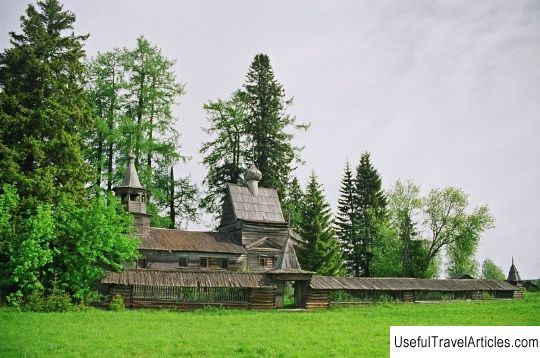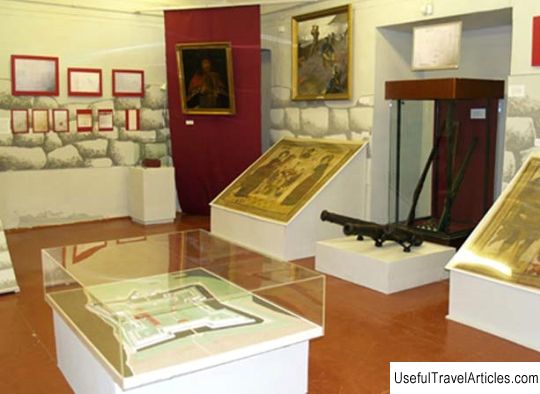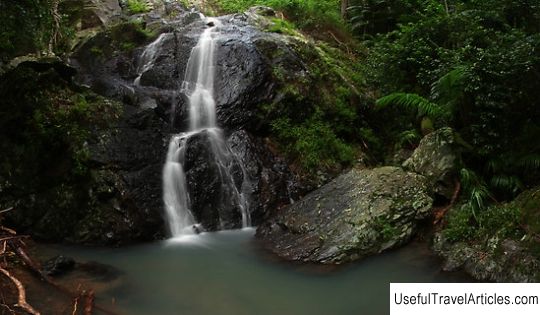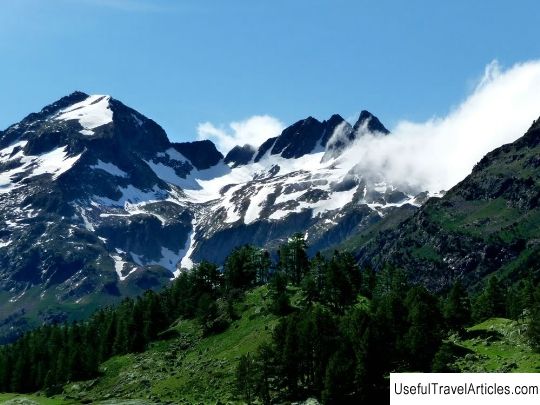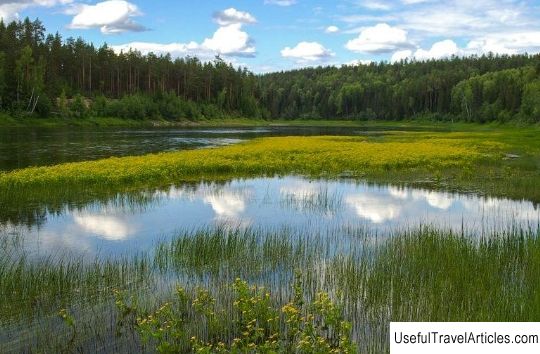Kenozersky National Park description and photos - Russia - North-West: Arkhangelsk Region
Rating: 7,6/10 (100 votes) 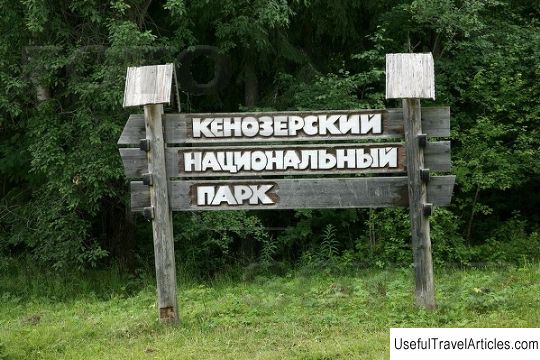
Kenozersky National Park description and photos - Russia - North-West: Arkhangelsk Region. Detailed information about the attraction. Description, photos and a map showing the nearest significant objects. Photo and descriptionThe territory of the Kenozersky National Park is a natural, historical and cultural complex. Its area is 139.6 thousand hectares. It is located in 2 districts of the Arkhangelsk region: Kargopol and Plesetsk and, accordingly, has two sectors of the same name. Kenozersky National Park was formed on December 28, 1991. In 2004, it was included in the World Network of Biosphere Reserves. The park was officially recognized as the property of the entire planet. Here lies the border of the Russian Platform and the Baltic Shield, the watershed between the basins of the Baltic and White seas, the contact area of several faunistic and floristic complexes. Nature and man have created conditions in the park for a wide range of habitats for animals, birds, plants, many of which are located on the borders of their ranges. A special value of the Kenozersky National Park is the cultural landscapes of the Russian North, and their cultural and historical elements (“holy” groves, churches, chapels, worship crosses, and so on) are a kind of visiting card. The historical and cultural heritage of the park includes about 100 architectural monuments, including churches and bell towers, wooden chapels, chopped fences, engineering structures, peasant huts, water mills, barns, worship crosses, “holy” groves and trees, religious stones and archeological monuments. One of the best examples of wooden architecture in Kenozero is the architectural complex of the St. George Church (17th century) in the village of Porzhenskoye, surrounded by a log fence and located in the "holy" grove, and the Pochozersky church ensemble (17th - 18th centuries), consisting of a hipped-roof church of the Origin of the Honorable Trees of Christ , a church with a cubic completion of the Finding of the Head of John the Baptist and a bell tower, united by a refectory and passages, in the village of Filippovskaya. The Kenozero chapels located in the “holy” groves, near roads, in the wilderness, in the center of villages have a high artistic and emotional impact. These are monuments of folk architecture. They were created in the national architectural traditions of their time. The artistic and architectural value of many monuments is enhanced by the interior decoration. The most spectacular of these are the overlap of prayer halls ("heaven"), painted on biblical themes. As of today, 15 Kenozero "heavens" have been preserved (the largest collection in Russia). A particularly unique phenomenon is the presence of two "heavens" in the altar and the temple of one monument (the ensemble of the St. George Church and the Temple of the Origin of the Honorable Trees of Christ). In addition, in the Kenozersky National Park, there are remarkable monuments of civil architecture ("chicken" huts, twin houses, barns of the 18th century with "magpies" and others). On the buildings you can see magnificent examples of house carvings: valances and quilts, towels, chiseled balusters on porches and balconies, window frames, painted shutters and pediments. Engineering and hydraulic structures are interesting. Complete lake-channel systems have survived, regulated by water mills and dams. An integral part of the Kenozero landscapes are worship crosses and “holy” groves, which are located mainly on the sites of former pagan sanctuaries. The “holy” groves have always been held in high esteem by the surrounding population. The groves aroused superstitious fear among people, who considered them to belong to the saint in whose honor the chapel was built. The same attitude of the Kenozero people was towards worship crosses. Long ago, these crosses were used to mark special places in this area. They were placed where the chapel burned down or a monastery stood, at forks and crossroads, at the entrances to bridges, in a word, wherever they considered it necessary to overshadow themselves with the symbol of the cross. To protect the crosses from snow and rain, small gable roofs of various sizes and types were sometimes erected over them. The surviving worship crosses in the park area date back to the 18th century. Kenozero is the center of the existence of folk art. A century ago, songs, epics, fairy tales were recorded here by the famous Russian folklorists Rybnikov, Hilferding, Kharuzin. The heroic epic of the Kenozero region is considered a treasure of folklore (consists of 83 epics). The close relationship of the natural, cultural and historical components of the Kenozero National Park presupposes its comprehensive protection, research and adoption of measures that support the revival of one of the most picturesque corners of the Russian North. The close relationship of the natural, cultural and historical components of the Kenozero National Park presupposes its comprehensive protection, research and adoption of measures that support the revival of one of the most picturesque corners of the Russian North.         We also recommend reading Dormition Knyaginin monastery description and photos - Russia - Golden Ring: Vladimir Topic: Kenozersky National Park description and photos - Russia - North-West: Arkhangelsk Region. |
